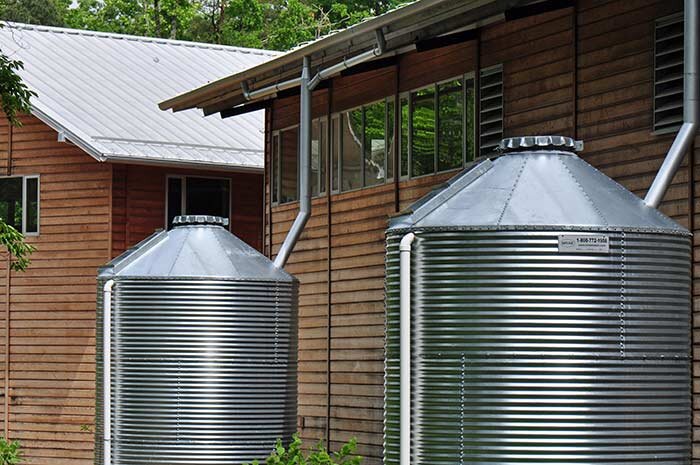Off-grid water
What Options are there for water in an off-Grid Home?
Setting up a water system is an important step toward being self-sufficient for rural homesteaders, preppers, and off-grid enthusiasts. Making sure you follow the regulations of the county where you are building and taking time to research the right off-grid water system for your property is a critical step. You can eliminate a lot of costly components by leveraging the right set-up. Having a safe, reliable, and independent source of water is an absolute necessity for survival and should be one of the first considerations taken when planning your homestead. Here is a brief overview of water options and resources for an off-grid home:
image by Off Grid World
Cisterns:
What is a cistern and what are the benefits? A cistern water system stores the water needed for a household in a large container that can be filled either from water delivery, water haul, or by rainwater. A 2,000 gallon container can supply a household of four people with water for several months if they are frugal with their water usage. Today’s cisterns are generally made of plastic or metal and are self contained, allowing them to be placed in a basement, attic, outside the home or buried under the ground. Some cisterns are also placed on towers to provide water pressure.
Benefits
- Survive dry spells: Cistern water systems are independent of problems with municipal water systems. Cisterns can help people get through dry periods without having to import water or even leave their residence due to lack of water.
- Consistent money saver: In places where water is expensive, a rainwater-fed cistern system can save a lot of money.
- Most economical choice: If you don't want to drill a well, you can use a cistern and haul your own water. Many homeowners who wish to live “off-grid” use a cistern as the main source of water for a household. Water can be delivered as needed or collected naturally.
image by The Spruce
Wells:
What types of wells are out there for me to use? Wells can be deep or shallow, drilled, dug, bored or driven. Depending on how you operate your homestead will determine which well works best for your needs.
Drilled wells are typically at least 25 feet deep, small in diameter (4 to 8 inches), and the only option for getting water from bedrock. Drilled wells are constructed by either cable tool (percussion) or rotary-drilling machines.
Dug wells are usually dug by a backhoe or an excavator. Dug wells can only be created in soil; they’re typically 24 to 36 inches in diameter and usually less than 30 feet deep.
Bored wells are similar to dug wells, except they’re created by specialized equipment that augers a round hole into the soil. This lets bored wells extend from 30 all the way to 100 feet deep, and the boring operation is less disruptive to the surrounding landscape.
Driven wells are made by fitting a sharp, rigid, screened attachment (called a “sand point”) onto the end of rigid steel pipe. The sand point allows a pipe to be pounded into the ground for extracting groundwater from abundant, shallow sources in coarse and sandy soils. Sand points are usually the simplest and cheapest option for creating a well.
Learn more about county specific regulations, days of rainfall, and well depths needed as well as resources for water haul services and well diggers by clicking the button below.
Here are some resources for off-grid water ideas to get you started:
*Some of these projects might require minor modifications to ensure they meet county regulations where your property is located









